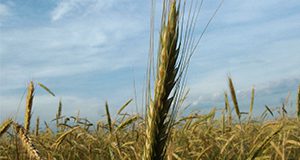The Nutrition Facts label is a great tool for consumers who are trying to make better food choices; it was created in 1993 to help members of the public learn more about the nutritional value of their food. Revisions to the label’s design were released in 2016, marking the first major change to the label in over 20 years. This 3-page document, written by Samantha Buddemeyer and Gail P. A. Kauwell, discusses the new features of the Nutrition Facts label. Published by the UF/IFAS Department of Food Science and Human Nutrition, January 2018.
http://edis.ifas.ufl.edu/fs300
Tag: Gail P. A. Kauwell
Raising Healthy Children: Wheat Allergies
If your child has been diagnosed with a wheat allergy, you may be wondering what you will feed him or her, because wheat is an ingredient in so many foods. Learning about ways to manage and treat your child’s allergy can help make this diagnosis less scary. This six-page publication is designed to provide you with information about wheat allergies and tips to help keep your child safe and reaction-free. Written by Pooja Tolani and Gail P.A. Kauwell and published by the Food Science and Human Nutrition Department.
http://edis.ifas.ufl.edu/fs299
Women's Nutrition: Folate/Folic Acid
 To decrease a baby’s chances of having certain types of births defects, mothers need to have already been consuming enough of the vitamin called folate, or folic acid, before they become pregnant. This article provides information about the folate/folic acid needs of women who are capable of becoming pregnant, including its role in preventing birth defects, sources, and strategies for meeting the recommended intake. This 4-page fact sheet was written by Caroline Dunn and Gail Kauwell, and published by the UF Department of Food Science and Human Nutrition, February 2015. (Photo Credit: Mike Watson Images/moodboard/Thinkstock.com)
To decrease a baby’s chances of having certain types of births defects, mothers need to have already been consuming enough of the vitamin called folate, or folic acid, before they become pregnant. This article provides information about the folate/folic acid needs of women who are capable of becoming pregnant, including its role in preventing birth defects, sources, and strategies for meeting the recommended intake. This 4-page fact sheet was written by Caroline Dunn and Gail Kauwell, and published by the UF Department of Food Science and Human Nutrition, February 2015. (Photo Credit: Mike Watson Images/moodboard/Thinkstock.com)
http://edis.ifas.ufl.edu/fs265
Hydration Myths
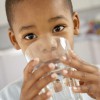 Whether at school, work, or running errands, it is common to see people sipping on their water bottles. This fashionable trend is a healthy one because water is essential for life. But while most people know that drinking water is good for them, many misconceptions exist about water and hydration. Learn the truth behind some of the most common hydration myths. This 4-page fact sheet was written by Lauren Caruso, Karla P. Shelnutt, and Gail Kauwell, and published by the UF Department of Family Youth and Community Sciences, August 2014.
Whether at school, work, or running errands, it is common to see people sipping on their water bottles. This fashionable trend is a healthy one because water is essential for life. But while most people know that drinking water is good for them, many misconceptions exist about water and hydration. Learn the truth behind some of the most common hydration myths. This 4-page fact sheet was written by Lauren Caruso, Karla P. Shelnutt, and Gail Kauwell, and published by the UF Department of Family Youth and Community Sciences, August 2014.
http://edis.ifas.ufl.edu/fy1409
Facts about Quinoa
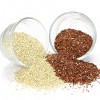 The U.S. Department of Agriculture’s MyPlate nutrition guide recommends that Americans consume half of their grains from whole grain foods. Whole wheat bread and oatmeal are whole grain foods that are familiar to most Americans, but lots of other whole grain foods are also available. An example of an unfamiliar whole grain food is quinoa (pronounced keen-wa). Quinoa is a nutritious seed that is simple to prepare. It can be served as a hot cereal or side dish, as a cold salad similar to pasta salad, or it can be used in recipes in place of rice or other grains. It also has the advantage of being gluten free, which is a must for people diagnosed with celiac disease. Follow the link to learn more about quinoa and what it has to offer. This 3-page fact sheet was written by Alexandra Dati, Gail Kauwell, and Amy Simonne, and published by the UF Department of Family Youth and Community Sciences, May 2014.
The U.S. Department of Agriculture’s MyPlate nutrition guide recommends that Americans consume half of their grains from whole grain foods. Whole wheat bread and oatmeal are whole grain foods that are familiar to most Americans, but lots of other whole grain foods are also available. An example of an unfamiliar whole grain food is quinoa (pronounced keen-wa). Quinoa is a nutritious seed that is simple to prepare. It can be served as a hot cereal or side dish, as a cold salad similar to pasta salad, or it can be used in recipes in place of rice or other grains. It also has the advantage of being gluten free, which is a must for people diagnosed with celiac disease. Follow the link to learn more about quinoa and what it has to offer. This 3-page fact sheet was written by Alexandra Dati, Gail Kauwell, and Amy Simonne, and published by the UF Department of Family Youth and Community Sciences, May 2014.
http://edis.ifas.ufl.edu/fy1408
Raising Healthy Children: Age Four
 As children continue their preschool years, they learn many new things and develop their own opinions and ideas. During this time, people inside and outside of the home may greatly influence them. As preschoolers continue to learn and grow, caregivers can take many steps to guide their children in a healthy and positive direction. This 4-page fact sheet was written by Kate Bennet, Gail Kauwell, and Karla P. Shelnutt, and published by the UF Department of Family Youth and Community Sciences, April 2014.
As children continue their preschool years, they learn many new things and develop their own opinions and ideas. During this time, people inside and outside of the home may greatly influence them. As preschoolers continue to learn and grow, caregivers can take many steps to guide their children in a healthy and positive direction. This 4-page fact sheet was written by Kate Bennet, Gail Kauwell, and Karla P. Shelnutt, and published by the UF Department of Family Youth and Community Sciences, April 2014.
http://edis.ifas.ufl.edu/fy1398
Raising Healthy Children: Promoting a Positive Feeding Experience
 All parents have heard “I don’t like that!” or “I’m not hungry!” from their child at some point or another. It’s likely that your child will not like every food that is served, but that doesn’t mean mealtime can’t still be a pleasant experience for the family. Parents may think they have sole responsibility for their child’s food choices, but Ellyn Satter, a registered dietitian who specializes in feeding and eating, advises that young children also have responsibility in the eating process. If feeding your child is stressful, read this fact sheet to learn about the division of responsibility in feeding and how to make meal times more enjoyable for the whole family. This 3-page fact sheet was written by Tiffany N. Stodtko, Karla P. Shelnutt, and Gail P.A. Kauwell, and published by the UF Department of Family Youth and Community Sciences, December 2014.
All parents have heard “I don’t like that!” or “I’m not hungry!” from their child at some point or another. It’s likely that your child will not like every food that is served, but that doesn’t mean mealtime can’t still be a pleasant experience for the family. Parents may think they have sole responsibility for their child’s food choices, but Ellyn Satter, a registered dietitian who specializes in feeding and eating, advises that young children also have responsibility in the eating process. If feeding your child is stressful, read this fact sheet to learn about the division of responsibility in feeding and how to make meal times more enjoyable for the whole family. This 3-page fact sheet was written by Tiffany N. Stodtko, Karla P. Shelnutt, and Gail P.A. Kauwell, and published by the UF Department of Family Youth and Community Sciences, December 2014.
http://edis.ifas.ufl.edu/fy1397
A Consumer's Guide to Eggs
 People have been eating eggs for centuries. Records as far back as 1400 BC show that the Chinese and Egyptians raised birds for their eggs. The first domesticated birds to reach the Americas arrived in 1493 on Christopher Columbus' second voyage to the New World. Most food stores in the United States offer many varieties of chicken eggs to choose from — white, brown, organic, cage free, vegetarian, omega-3 fatty acid enriched, and more. The bottom line is that buying eggs is not as simple as it used to be because more choices exist today. This 4-page fact sheet will help you understand the choices you have as a consumer, so you can determine which variety of egg suits you and your family best. Written by Jeanine Beatty, Karla Shelnutt, and Gail Kauwell, and published by the UF Department of Family Youth and Community Sciences, April 2013.
People have been eating eggs for centuries. Records as far back as 1400 BC show that the Chinese and Egyptians raised birds for their eggs. The first domesticated birds to reach the Americas arrived in 1493 on Christopher Columbus' second voyage to the New World. Most food stores in the United States offer many varieties of chicken eggs to choose from — white, brown, organic, cage free, vegetarian, omega-3 fatty acid enriched, and more. The bottom line is that buying eggs is not as simple as it used to be because more choices exist today. This 4-page fact sheet will help you understand the choices you have as a consumer, so you can determine which variety of egg suits you and your family best. Written by Jeanine Beatty, Karla Shelnutt, and Gail Kauwell, and published by the UF Department of Family Youth and Community Sciences, April 2013.
http://edis.ifas.ufl.edu/fy1357
Raising Healthy Children: Shellfish Allergies
 Learning that your child has a shellfish allergy can be scary. But having a plan and knowing how to treat and avoid a reaction to shellfish can ease this fear and keep your child safe. This publication explains shellfish allergies and provides information on the symptoms and how to respond if a reaction occurs. There are also tips to make it easier to manage your child’s shellfish allergy at home and away from home.This 4-page fact sheet was written by Kate Bennett, Karla P. Shelnutt, and Gail P. A. Kauwell, and published by the UF Department of Family Youth and Community Sciences, November 2013.
Learning that your child has a shellfish allergy can be scary. But having a plan and knowing how to treat and avoid a reaction to shellfish can ease this fear and keep your child safe. This publication explains shellfish allergies and provides information on the symptoms and how to respond if a reaction occurs. There are also tips to make it easier to manage your child’s shellfish allergy at home and away from home.This 4-page fact sheet was written by Kate Bennett, Karla P. Shelnutt, and Gail P. A. Kauwell, and published by the UF Department of Family Youth and Community Sciences, November 2013.
http://edis.ifas.ufl.edu/fy1402
Choose MyPlate: Enjoy Your Food But Eat Less
 Americans tend to select and consume larger portions than they need, and they don’t always make the best choices either. Part of the secret to maintaining a healthy diet is to know which foods to select and how to balance your intake with the amount of energy your body uses. This publication provides information about which foods make the healthiest contributions to our diets and which to limit. It also provides tips for making it easier to adjust your portions and to enjoy foods while making adjustments to your plate. This 4-page fact sheet was written by Ashley Hamm, Karla P. Shelnutt, and Gail P. A. Kauwell, and published by the UF Department of Family Youth and Community Sciences, November 2013.
Americans tend to select and consume larger portions than they need, and they don’t always make the best choices either. Part of the secret to maintaining a healthy diet is to know which foods to select and how to balance your intake with the amount of energy your body uses. This publication provides information about which foods make the healthiest contributions to our diets and which to limit. It also provides tips for making it easier to adjust your portions and to enjoy foods while making adjustments to your plate. This 4-page fact sheet was written by Ashley Hamm, Karla P. Shelnutt, and Gail P. A. Kauwell, and published by the UF Department of Family Youth and Community Sciences, November 2013.
http://edis.ifas.ufl.edu/fy1400
Understanding the New School Meal Standards
 If you have school-age children, you may have heard that the 2012 school year brought major changes to the meals children eat at school. All meals provided through the School Breakfast and National School Lunch Programs now must be consistent with the USDA’s Dietary Guidelines for Americans. This 6-page fact sheet was written by Jenna Norris, Karla P. Shelnutt, and Gail P. A. Kauwell, and published by the UF Department of Family Youth and Community Sciences, October 2013.
If you have school-age children, you may have heard that the 2012 school year brought major changes to the meals children eat at school. All meals provided through the School Breakfast and National School Lunch Programs now must be consistent with the USDA’s Dietary Guidelines for Americans. This 6-page fact sheet was written by Jenna Norris, Karla P. Shelnutt, and Gail P. A. Kauwell, and published by the UF Department of Family Youth and Community Sciences, October 2013.
http://edis.ifas.ufl.edu/fy1396
Eating Defensively: The Nutrition and Food Safety Benefits of Cooked Produce
 Current nutrition trends such as the “raw food diet” may lead consumers to believe that raw leafy vegetables are more nutritious than cooked vegetables, despite research showing that cooked vegetables make important nutritional contributions. This publication describes the nutrient retention and quality of cooked vegetables, explains why cooking vegetables is appropriate for consumers with food safety concerns, and provides tips for preparing cooked vegetables. This 4-page fact sheet was written by Morgan Dehnard, Amy Simonne, and Gail P. A. Kauwell, and published by the UF Department of Family Youth and Community Sciences, October 2013.
Current nutrition trends such as the “raw food diet” may lead consumers to believe that raw leafy vegetables are more nutritious than cooked vegetables, despite research showing that cooked vegetables make important nutritional contributions. This publication describes the nutrient retention and quality of cooked vegetables, explains why cooking vegetables is appropriate for consumers with food safety concerns, and provides tips for preparing cooked vegetables. This 4-page fact sheet was written by Morgan Dehnard, Amy Simonne, and Gail P. A. Kauwell, and published by the UF Department of Family Youth and Community Sciences, October 2013.
http://edis.ifas.ufl.edu/fy1395
Understanding Gluten Sensitivity and Celiac Disease (FCS8028/FY1369)
 Several years ago, most people probably had never heard of gluten, but by 2011, gluten-free diets became more popular than low carbohydrate diets. One reason for this is the increased awareness and diagnosis of conditions in which gluten triggers an abnormal response in the body, such as gluten sensitivity and celiac disease. This 4-page fact sheet will help you learn about gluten sensitivity and celiac disease, as well as understand what they have in common and what is different about them. Written by Stephanie Meyer, Karla P. Shelnutt, and Gail P. A. Kauwell, and published by the UF Department of Family Youth and Community Sciences, April 2013.
Several years ago, most people probably had never heard of gluten, but by 2011, gluten-free diets became more popular than low carbohydrate diets. One reason for this is the increased awareness and diagnosis of conditions in which gluten triggers an abnormal response in the body, such as gluten sensitivity and celiac disease. This 4-page fact sheet will help you learn about gluten sensitivity and celiac disease, as well as understand what they have in common and what is different about them. Written by Stephanie Meyer, Karla P. Shelnutt, and Gail P. A. Kauwell, and published by the UF Department of Family Youth and Community Sciences, April 2013.
http://edis.ifas.ufl.edu/fy1369
Choose MyPlate: Reduce Your Sodium (FCS80027/FY1360)
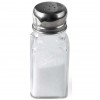 Reducing sodium intake is one of the MyPlate recommendations for healthy eating. Most Americans eat more sodium than they need, which can have negative health effects. This publication provides facts about sodium and why reducing sodium intake is important. It also provides easy tips to reduce your sodium intake. This 4-page fact sheet was written by Ashley Hamm, Karla P. Shelnutt, and Gail P. A. Kauwell, and published by the UF Department of Family Youth and Community Sciences, April 2013.
Reducing sodium intake is one of the MyPlate recommendations for healthy eating. Most Americans eat more sodium than they need, which can have negative health effects. This publication provides facts about sodium and why reducing sodium intake is important. It also provides easy tips to reduce your sodium intake. This 4-page fact sheet was written by Ashley Hamm, Karla P. Shelnutt, and Gail P. A. Kauwell, and published by the UF Department of Family Youth and Community Sciences, April 2013.
http://edis.ifas.ufl.edu/fy1360
Bottle-Feeding Your Baby (FCS80026/FY1359)
 Families choose to bottle-feed their babies for many reasons. While bottle-feeding is not difficult, you need to know several things to feed your baby safely and ensure that he or she receives the nutrition and bonding needed for proper growth and development. If you are considering bottle-feeding your baby or have decided that bottle-feeding is the best option for your situation, this publication will help you learn about bottle-feeding. This 5-page fact sheet was written by Sarah A. Schmidt, Karla P. Shelnutt, and Gail P. A. Kauwell, and published by the UF Department of Family Youth and Community Sciences, April 2013.
Families choose to bottle-feed their babies for many reasons. While bottle-feeding is not difficult, you need to know several things to feed your baby safely and ensure that he or she receives the nutrition and bonding needed for proper growth and development. If you are considering bottle-feeding your baby or have decided that bottle-feeding is the best option for your situation, this publication will help you learn about bottle-feeding. This 5-page fact sheet was written by Sarah A. Schmidt, Karla P. Shelnutt, and Gail P. A. Kauwell, and published by the UF Department of Family Youth and Community Sciences, April 2013.
http://edis.ifas.ufl.edu/fy1359
Choose MyPlate: Drink Water Instead of Sugary Drinks (FCS80025/FY1358)
 The regular consumption of sugary drinks has greatly increased over the past few decades. Most adults consume about 400 calories per day as beverages, and regular soda is the number one drink. The added sugars and calories in sugary drinks can really add up — so rethink what you drink! Use one or more of the tips provided to drink more water and get on the right track to living a healthier life. This 3-page fact sheet was written by Jeanine Beatty, Karla Shelnutt, and Gail Kauwell, and published by the UF Department of Family Youth and Community Sciences, April 2013.
The regular consumption of sugary drinks has greatly increased over the past few decades. Most adults consume about 400 calories per day as beverages, and regular soda is the number one drink. The added sugars and calories in sugary drinks can really add up — so rethink what you drink! Use one or more of the tips provided to drink more water and get on the right track to living a healthier life. This 3-page fact sheet was written by Jeanine Beatty, Karla Shelnutt, and Gail Kauwell, and published by the UF Department of Family Youth and Community Sciences, April 2013.
http://edis.ifas.ufl.edu/fy1358
Raising Healthy Children: Health Risks of Obesity (FCS80023/FY1356)
 Although babies need fat for warmth and normal growth, as children develop, too much fat can be unhealthy. Childhood obesity may result in health problems early in life and into adulthood. This 4-page fact sheet will help you understand the health risks of obesity and ways to help your child maintain a healthy weight. Written by Stephanie Meyer, Karla Shelnutt, and Gail Kauwell, and published by the UF Department of Family Youth and Community Sciences, April 2013.
Although babies need fat for warmth and normal growth, as children develop, too much fat can be unhealthy. Childhood obesity may result in health problems early in life and into adulthood. This 4-page fact sheet will help you understand the health risks of obesity and ways to help your child maintain a healthy weight. Written by Stephanie Meyer, Karla Shelnutt, and Gail Kauwell, and published by the UF Department of Family Youth and Community Sciences, April 2013.
http://edis.ifas.ufl.edu/fy1356
MyPlate Foods to Increase: Fruits and Vegetables (FCS80022/FY1348)
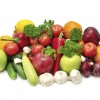 Fruits and vegetables should be a main component of every meal. They are low in calories and provide a number of vitamins that you need in your diet. By making half of your plate fruits and vegetables at every meal, you will reduce your risk for chronic diseases and may even protect yourself against certain types of cancer. This 4-page fact sheet provides information on fruits and vegetables and includes tips on how to add more of them to your diet. Written by Jonathan Holzinger, Karla Shelnutt, and Gail Kauwell, and published by the UF Department of Family Youth and Community Sciences, February 2013.
Fruits and vegetables should be a main component of every meal. They are low in calories and provide a number of vitamins that you need in your diet. By making half of your plate fruits and vegetables at every meal, you will reduce your risk for chronic diseases and may even protect yourself against certain types of cancer. This 4-page fact sheet provides information on fruits and vegetables and includes tips on how to add more of them to your diet. Written by Jonathan Holzinger, Karla Shelnutt, and Gail Kauwell, and published by the UF Department of Family Youth and Community Sciences, February 2013.
http://edis.ifas.ufl.edu/fy1348
Abdominal Obesity (FCS80021/FY1347)
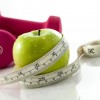 Santa Claus, Winnie the Pooh®, and Shrek® … what do these three characters have in common? You probably know them for being jolly and for having extra fat around their waists, also known as “abdominal obesity.” Although this may be cute in fairy tales or movies, abdominal obesity can be a serious health risk in the real world. Abdominal obesity, also known as central adiposity, is a buildup of fat tissue around the waist or midsection. It is a risk factor for certain health conditions. Read this 4-page fact sheet to find out more about the health risks of abdominal obesity and ways to prevent or treat it. Written by Erica Bub, Karla Shelnutt, and Gail Kauwell, and published by the UF Department of Family Youth and Community Sciences, February 2013.
Santa Claus, Winnie the Pooh®, and Shrek® … what do these three characters have in common? You probably know them for being jolly and for having extra fat around their waists, also known as “abdominal obesity.” Although this may be cute in fairy tales or movies, abdominal obesity can be a serious health risk in the real world. Abdominal obesity, also known as central adiposity, is a buildup of fat tissue around the waist or midsection. It is a risk factor for certain health conditions. Read this 4-page fact sheet to find out more about the health risks of abdominal obesity and ways to prevent or treat it. Written by Erica Bub, Karla Shelnutt, and Gail Kauwell, and published by the UF Department of Family Youth and Community Sciences, February 2013.
http://edis.ifas.ufl.edu/fy1347
Raising Healthy Children: Milk and Egg Allergies (FCS80020/FY1346)
 Milk and eggs are familiar, nutritious foods that most children enjoy, but these foods can cause problems for children with milk and egg allergies. If your child is allergic to milk or eggs, you need to consider steps you and your child can take to avoid these foods, and you need to make sure your child gets enough of the proper nutrients, especially if certain foods are removed from his or her diet. This 5-page fact sheet will help you learn more about milk and egg allergies and how to make sure your allergic child stays safe. Written by Jonathan Holzinger, Karla Shelnutt, and Gail Kauwell, and published by the UF Department of Family Youth and Community Sciences, February 2013.
Milk and eggs are familiar, nutritious foods that most children enjoy, but these foods can cause problems for children with milk and egg allergies. If your child is allergic to milk or eggs, you need to consider steps you and your child can take to avoid these foods, and you need to make sure your child gets enough of the proper nutrients, especially if certain foods are removed from his or her diet. This 5-page fact sheet will help you learn more about milk and egg allergies and how to make sure your allergic child stays safe. Written by Jonathan Holzinger, Karla Shelnutt, and Gail Kauwell, and published by the UF Department of Family Youth and Community Sciences, February 2013.
http://edis.ifas.ufl.edu/fy1346

